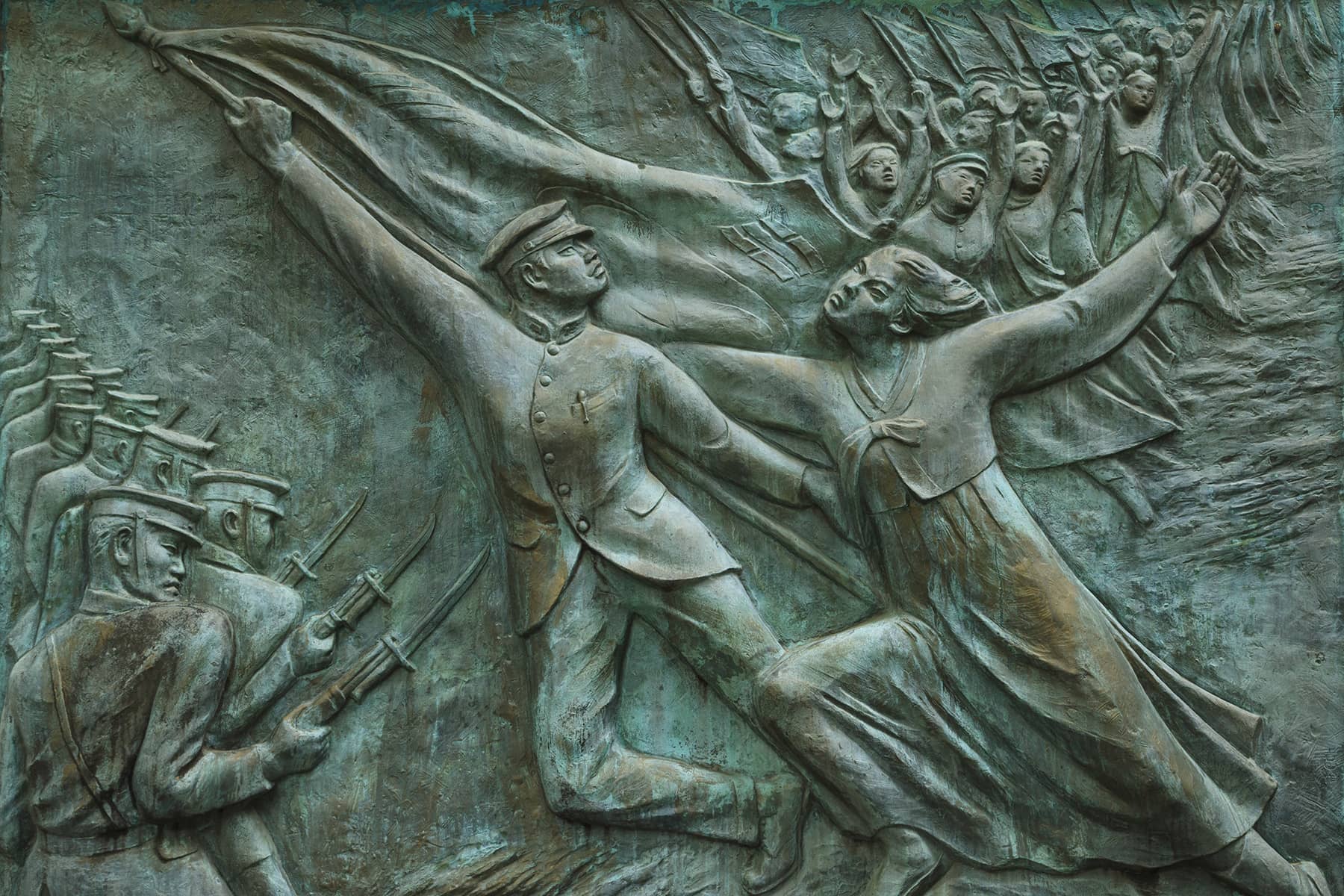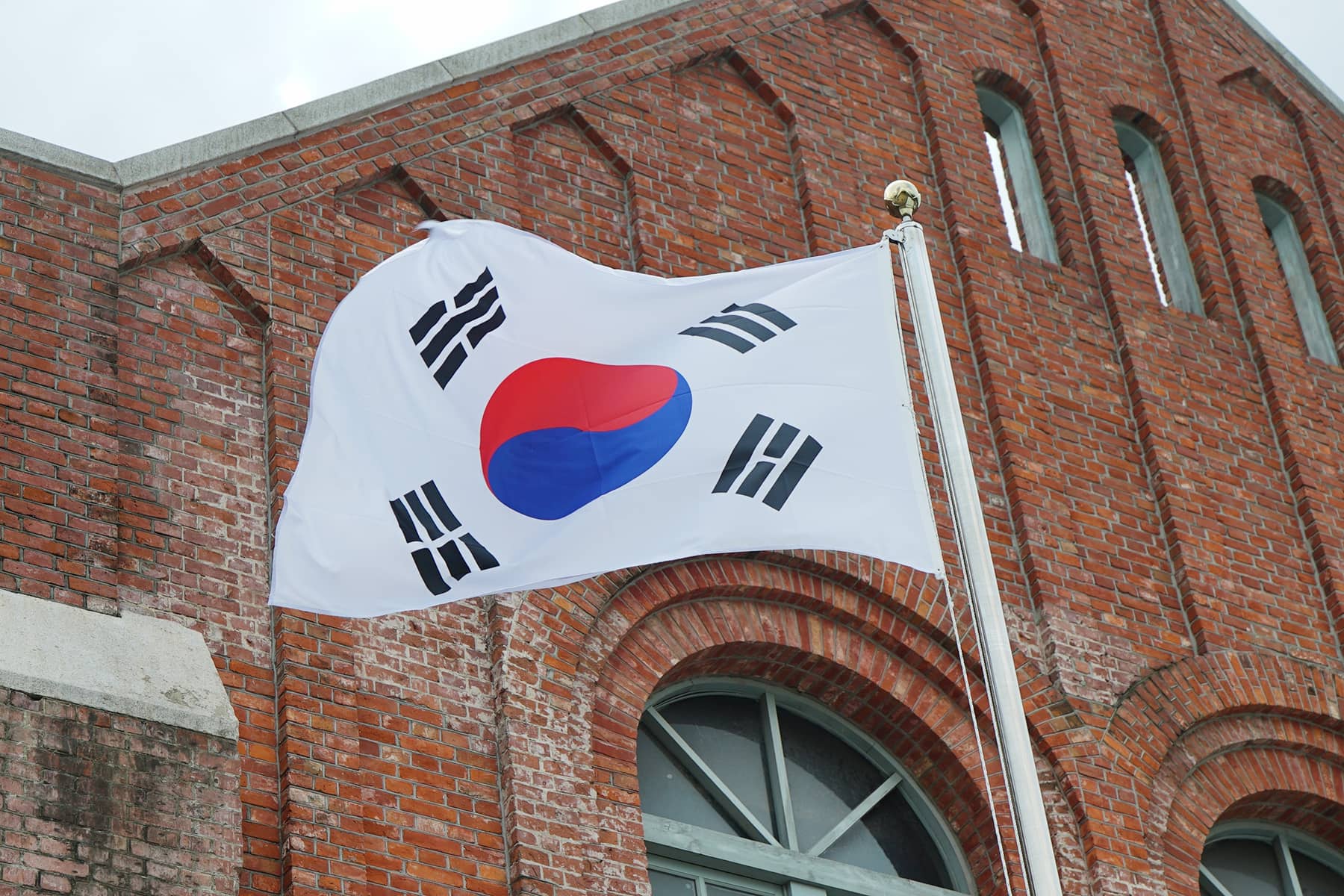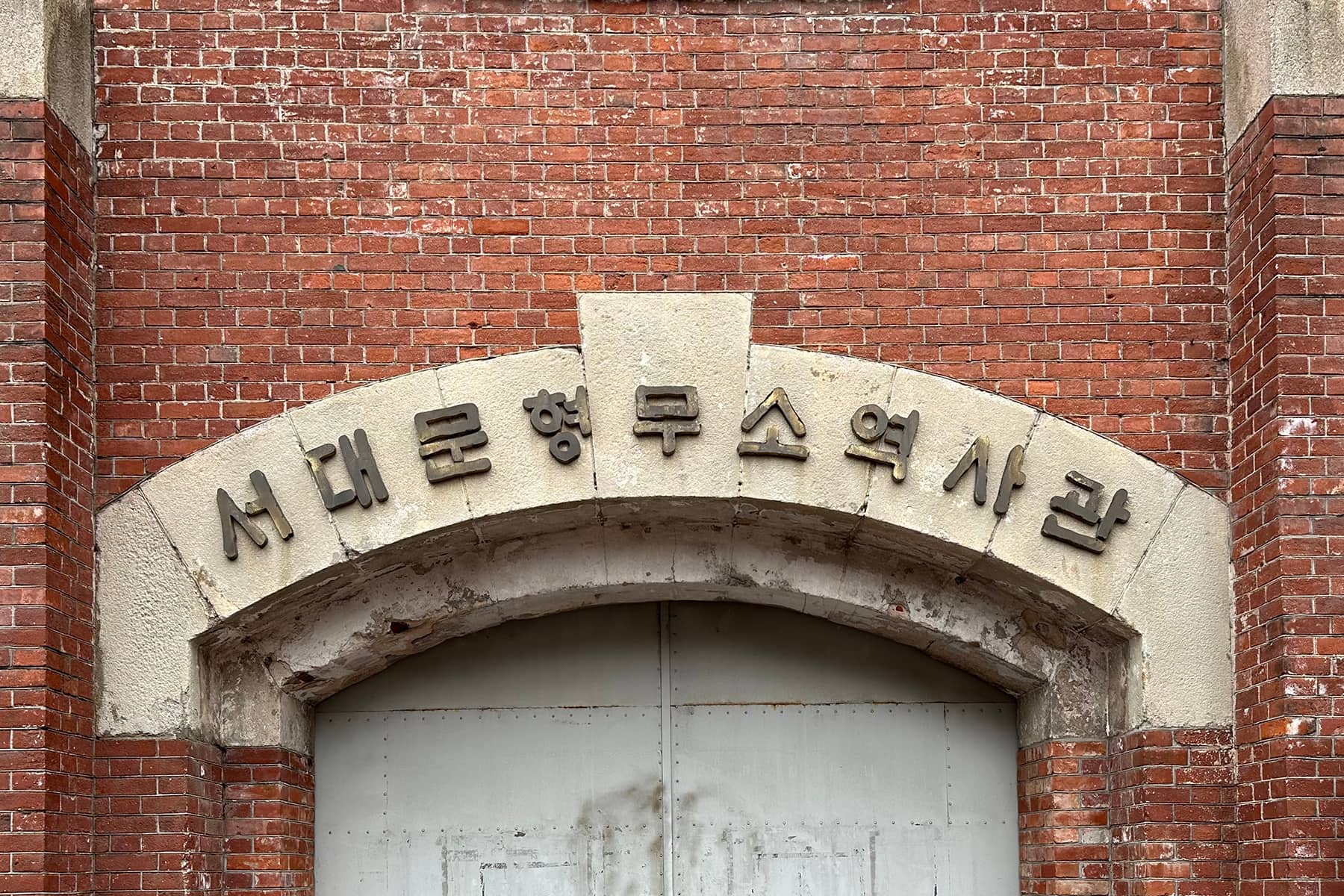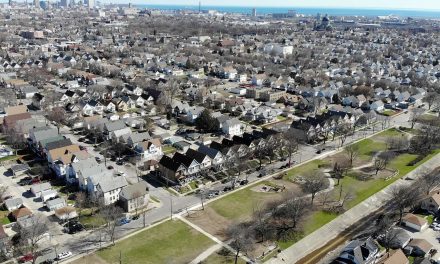
The Great Power struggle between Russia, China, and Japan in the late 19th and early 20th centuries set the stage for Japan to colonize Korea, and later contributed to the conditions that led to the Korean War.
The complex geopolitical rivalry involved a series of conflicts and diplomatic maneuvers that reshaped East Asia. While the Korean War started as a civil war between North and South Korea, it quickly became an international conflict due to the involvement of global powers aligned along Cold War lines. As a result, it is accurate to describe the Korean War as both a civil war and an international conflict.
SETTING THE STAGE
By the mid-19th century, the Qing Dynasty in China was in decline, weakened by internal strife, corruption, and defeats in conflicts such as the Opium Wars against Britain. The vulnerability made China an attractive target for other powers seeking to carve out spheres of influence. After the Meiji Restoration in 1868, Japan rapidly industrialized and modernized its military, seeking to become a dominant regional power. At the same time, Czarist Russia was expanding eastward through Siberia, seeking warm-water ports and influence in East Asia.
THE SINO-JAPANESE WAR
The initial conflict of significance in the power struggle was the First Sino-Japanese War (1894-1895). During that period, China, under the Qing Dynasty, had exerted suzerainty over Korea for centuries. However, Japan, emerging as a modernized nation-state after the Meiji Restoration, sought to expand its influence and challenge Chinese dominance in Korea. The war ended in a decisive Japanese victory, and the Treaty of Shimonoseki forced China to cede Taiwan to Japan and recognize Korean independence, effectively ending Chinese influence over Korea.
THE RUSSO-JAPANESE WAR
Following the Sino-Japanese War, Russia, which had also been expanding its influence in East Asia, became the next major power to contend with Japan. The two nations clashed over their competing interests in Korea and Manchuria, leading to the Russo-Japanese War (1904-1905). Japan’s victory in this war shocked the world, particularly because it was the first time an Asian power had defeated a European power in modern history. The Treaty of Portsmouth, mediated by the United States, recognized Japan’s paramount interests in Korea and granted Japan control over the Liaodong Peninsula and the South Manchurian Railway.
JAPANESE COLONIZATION OF KOREA
With its regional rivals weakened, Japan formally annexed Korea in 1910. The Japanese colonization of Korea was characterized by efforts to assimilate Koreans, exploit the country’s resources, and suppress Korean culture and resistance. The period of colonial rule lasted until the end of World War II in 1945, leaving deep-seated resentment among the Korean people.
THE END OF WORLD WAR II
The defeat of Japan in World War II led to the liberation of Korea. However, the power vacuum left by Japan’s departure and the onset of the Cold War between the United States and the Soviet Union resulted in Korea’s division. The 38th parallel was established as a temporary dividing line, with Soviet forces occupying the north and American forces occupying the south.
THE KOREAN WAR
The division of Korea set the stage for the Korean War. In the north, a Communist regime was established under Kim Il-sung with Soviet support, while in the south a capitalist government was formed under Syngman Rhee with American backing. Tensions between the two Koreas, fueled by ideological differences and the broader Cold War context, erupted into full-scale war in 1950 when North Korean forces, supported by the Soviet Union and China, invaded the south. The United States and United Nations forces intervened on behalf of South Korea, leading to a brutal and protracted conflict that ended in an armistice in 1953, but not a formal peace treaty, leaving the Korean Peninsula divided to this day.
TIMELINE
1894-1895: Japan defeats China in the First Sino-Japanese War and gains influence over Korea.
1904-1905: Russo-Japanese War ends with the utter defeat of Russian Far East forces by Imperial Japan, allowing it to solidify control over Korea.
1910: Japanese Annexation of Korea and it formally becomes a Japanese colony.
1945: Japan surrenders and ends World War II. Korea is liberated, but gets divided at the 38th parallel, with Soviet forces in the north and American forces in the south.
1948: Establishment of Separate Governments with North Korea (Democratic People’s Republic of Korea) established under Kim Il-sung, and South Korea (Republic of Korea) established under Syngman Rhee.
1950 June 25: North Korean forces invade South Korea, starting the Korean War. The United Nations Security Council calls for member nations to assist South Korea. Seoul, the capital of South Korea, falls to North Korean forces for the first time on June 28. UN forces, primarily composed of U.S. troops, begin arriving in Korea by July.
1950 September 15: UN forces launch a successful amphibious assault near Seoul, turning the tide of the war with the Battle of Inchon. By October, UN forces cross the 38th parallel and advance into North Korea.
1950 October 19: Pyongyang, the capital of North Korea, falls to UN forces. Chinese forces intervene on behalf of North Korea, pushing UN forces back during November.
1951: Seoul falls again in January, this time to Chinese and North Korean forces. UN forces recapture Seoul by March. A stalemate develops around the 38th parallel by April. Armistice negotiations begin at Kaesong in July, later moving to Panmunjom. Intense fighting continues with significant casualties on both sides, while negotiations face multiple breakdowns and delays.
1953 July 27: Armistice Agreement is signed at Panmunjom, establishing the Korean Demilitarized Zone (DMZ) and effectively ending the Korean War.
Post-1953: The armistice establishes a ceasefire but not a formal peace treaty, leaving North and South Korea technically still at war. As a result, the DMZ remains one of the most heavily fortified borders in the world.
- Exploring Korea: Stories from Milwaukee to the DMZ and across a divided peninsula
- A pawn of history: How the Great Power struggle to control Korea set the stage for its civil war
- Names for Korea: The evolution of English words used for its identity from Gojoseon to Daehan Minguk
- SeonJoo So Oh: Living her dream of creating a "folded paper" bridge between Milwaukee and Korean culture
- A Cultural Bridge: Why Milwaukee needs to invest in a Museum that celebrates Korean art and history
- Korean diplomat joins Milwaukee's Korean American community in celebration of 79th Liberation Day
- John T. Chisholm: Standing guard along the volatile Korean DMZ at the end of the Cold War
- Most Dangerous Game: The golf course where U.S. soldiers play surrounded by North Korean snipers
- Triumph and Tragedy: How the 1988 Seoul Olympics became a battleground for Cold War politics
- Dan Odya: The challenges of serving at the Korean Demilitarized Zone during the Vietnam War
- The Korean Demilitarized Zone: A border between peace and war that also cuts across hearts and history
- The Korean DMZ Conflict: A forgotten "Second Chapter" of America's "Forgotten War"
- Dick Cavalco: A life shaped by service but also silence for 65 years about the Korean War
- Overshadowed by conflict: Why the Korean War still struggles for recognition and remembrance
- Wisconsin's Korean War Memorial stands as a timeless tribute to a generation of "forgotten" veterans
- Glenn Dohrmann: The extraordinary journey from an orphaned farm boy to a highly decorated hero
- The fight for Hill 266: Glenn Dohrmann recalls one of the Korean War's most fierce battles
- Frozen in time: Rare photos from a side of the Korean War that most families in Milwaukee never saw
- Jessica Boling: The emotional journey from an American adoption to reclaiming her Korean identity
- A deportation story: When South Korea was forced to confront its adoption industry's history of abuse
- South Korea faces severe population decline amid growing burdens on marriage and parenthood
- Emma Daisy Gertel: Why finding comfort with the "in-between space" as a Korean adoptee is a superpower
- The Soul of Seoul: A photographic look at the dynamic streets and urban layers of a megacity
- The Creation of Hangul: A linguistic masterpiece designed by King Sejong to increase Korean literacy
- Rick Wood: Veteran Milwaukee photojournalist reflects on his rare trip to reclusive North Korea
- Dynastic Rule: Personality cult of Kim Jong Un expands as North Koreans wear his pins to show total loyalty
- South Korea formalizes nuclear deterrent strategy with U.S. as North Korea aims to boost atomic arsenal
- Tea with Jin: A rare conversation with a North Korean defector living a happier life in Seoul
- Journalism and Statecraft: Why it is complicated for foreign press to interview a North Korean defector
- Inside North Korea’s Isolation: A decade of images show rare views of life around Pyongyang
- Karyn Althoff Roelke: How Honor Flights remind Korean War veterans that they are not forgotten
- Letters from North Korea: How Milwaukee County Historical Society preserves stories from war veterans
- A Cold War Secret: Graves discovered of Russian pilots who flew MiG jets for North Korea during Korean War
- Heechang Kang: How a Korean American pastor balances tradition and integration at church
- Faith and Heritage: A Pew Research Center's perspective on Korean American Christians in Milwaukee
- Landmark legal verdict by South Korea's top court opens the door to some rights for same-sex couples
- Kenny Yoo: How the adversities of dyslexia and the war in Afghanistan fueled his success as a photojournalist
- Walking between two worlds: The complex dynamics of code-switching among Korean Americans
- A look back at Kamala Harris in South Korea as U.S. looks ahead to more provocations by North Korea
- Jason S. Yi: Feeling at peace with the duality of being both an American and a Korean in Milwaukee
- The Zainichi experience: Second season of “Pachinko” examines the hardships of ethnic Koreans in Japan
- Shadows of History: South Korea's lingering struggle for justice over "Comfort Women"
- Christopher Michael Doll: An unexpected life in South Korea and its cross-cultural intersections
- Korea in 1895: How UW-Milwaukee's AGSL protects the historic treasures of Kim Jeong-ho and George C. Foulk
- "Ink. Brush. Paper." Exhibit: Korean Sumukhwa art highlights women’s empowerment in Milwaukee
- Christopher Wing: The cultural bonds between Milwaukee and Changwon built by brewing beer
- Halloween Crowd Crush: A solemn remembrance of the Itaewon tragedy after two years of mourning
- Forgotten Victims: How panic and paranoia led to a massacre of refugees at the No Gun Ri Bridge
- Kyoung Ae Cho: How embracing Korean heritage and uniting cultures started with her own name
- Complexities of Identity: When being from North Korea does not mean being North Korean
- A fragile peace: Tensions simmer at DMZ as North Korean soldiers cross into the South multiple times
- Byung-Il Choi: A lifelong dedication to medicine began with the kindness of U.S. soldiers to a child of war
- Restoring Harmony: South Korea's long search to reclaim its identity from Japanese occupation
- Sado gold mine gains UNESCO status after Tokyo pledges to exhibit WWII trauma of Korean laborers
- The Heartbeat of K-Pop: How Tina Melk's passion for Korean music inspired a utopia for others to share
- K-pop Revolution: The Korean cultural phenomenon that captivated a growing audience in Milwaukee
- Artifacts from BTS and LE SSERAFIM featured at Grammy Museum exhibit put K-pop fashion in the spotlight
- Hyunjoo Han: The unconventional path from a Korean village to Milwaukee’s multicultural landscape
- The Battle of Restraint: How nuclear weapons almost redefined warfare on the Korean peninsula
- Rejection of peace: Why North Korea's increasing hostility to the South was inevitable
- WonWoo Chung: Navigating life, faith, and identity between cultures in Milwaukee and Seoul
- Korean Landmarks: A visual tour of heritage sites from the Silla and Joseon Dynasties
- South Korea’s Digital Nomad Visa offers a global gateway for Milwaukee’s young professionals
- Forgotten Gando: Why the autonomous Korean territory within China remains a footnote in history
- A game of maps: How China prepared to steal Korean history to prevent reunification
- From Taiwan to Korea: When Mao Zedong shifted China’s priority amid Soviet and American pressures
- Hoyoon Min: Putting his future on hold in Milwaukee to serve in his homeland's military
- A long journey home: Robert P. Raess laid to rest in Wisconsin after being MIA in Korean War for 70 years
- Existential threats: A cost of living in Seoul comes with being in range of North Korea's artillery
- Jinseon Kim: A Seoulite's creative adventure recording the city’s legacy and allure through art
- A subway journey: Exploring Euljiro in illustrations and by foot on Line 2 with artist Jinseon Kim
- Seoul Searching: Revisiting the first film to explore the experiences of Korean adoptees and diaspora






















